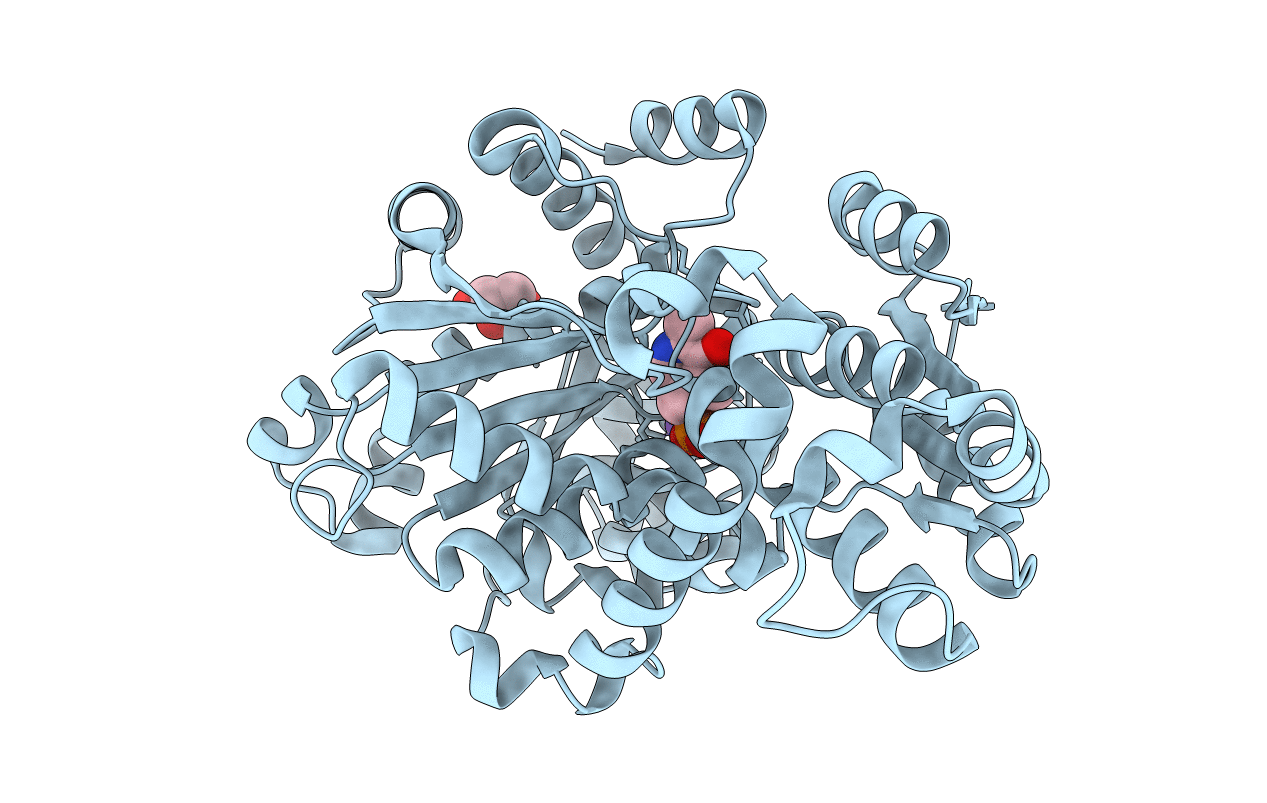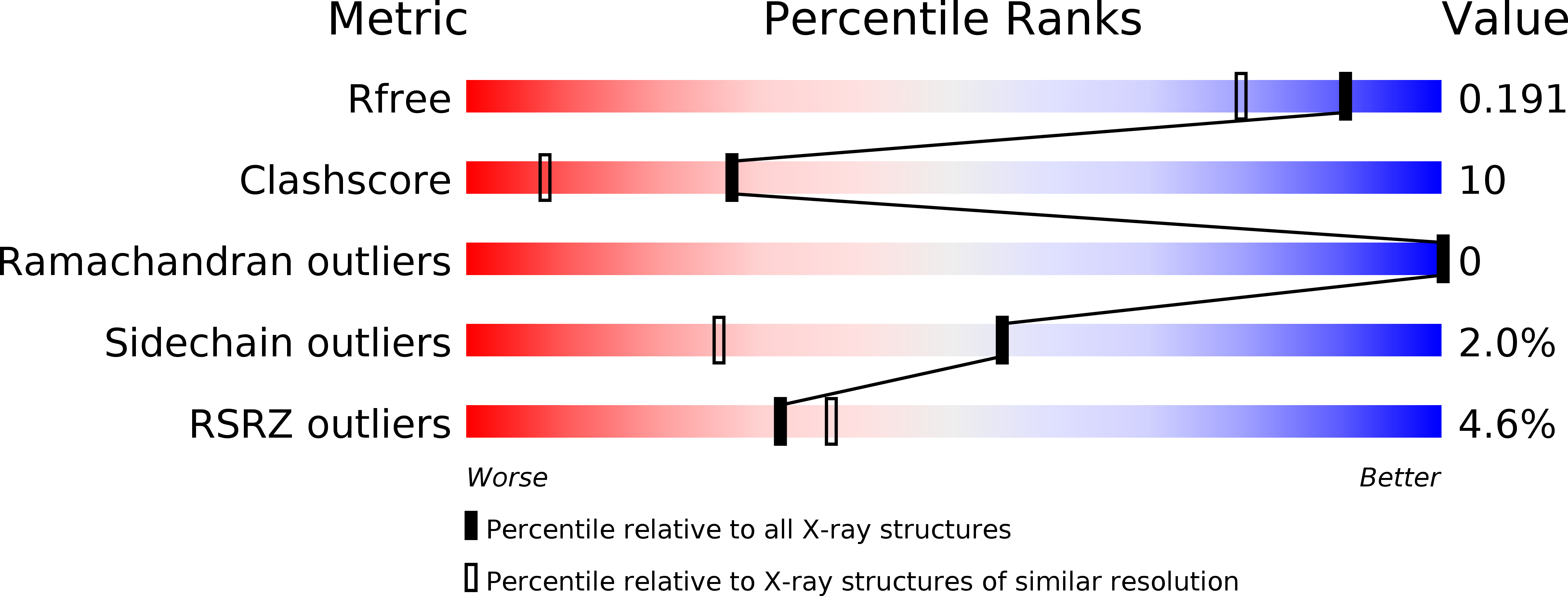
Deposition Date
2011-07-07
Release Date
2012-01-18
Last Version Date
2025-03-26
Entry Detail
PDB ID:
3SS7
Keywords:
Title:
Crystal structure of holo D-serine dehydratase from Escherichia coli at 1.55 A resolution
Biological Source:
Source Organism:
Escherichia coli (Taxon ID: 83333)
Host Organism:
Method Details:
Experimental Method:
Resolution:
1.55 Å
R-Value Free:
0.19
R-Value Work:
0.15
R-Value Observed:
0.16
Space Group:
P 1 21 1


